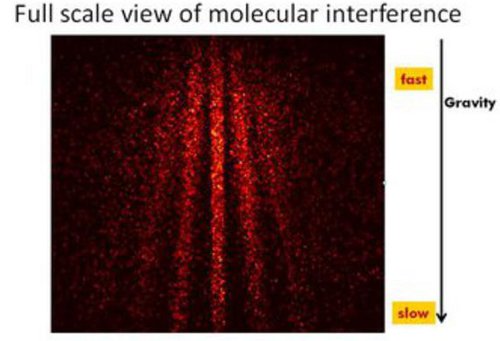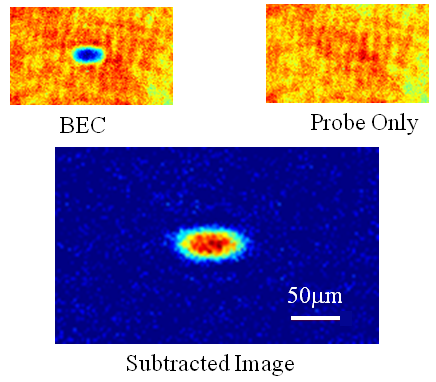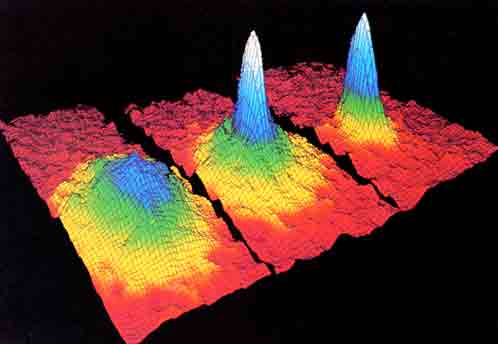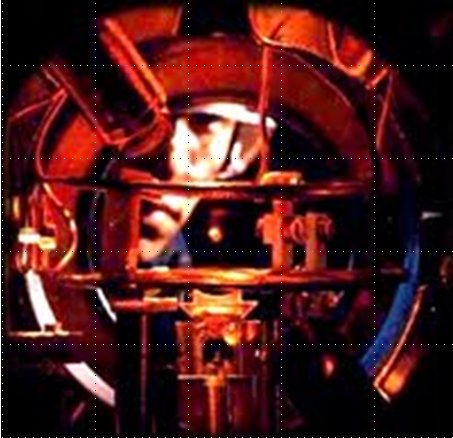I know I said there weren’t going to be physics posts for a while, but yesterday our Communications office passed along a media request about this paper on feedback cooling of BEC, from some sort of communications-person mailing list. I’d seen it talked up elsewhere– here, for example, so I banged out an email to… Continue reading Keeping BEC Cold
Category: Cold Atom Tools
When Is a Composite Object a Particle?
Through some kind of weird synchronicity, the title question came up twice yesterday, once in a comment to my TED@NYC talk post, and the second time on Twitter, in a conversation with a person whose account is protected, thus rendering it un-link-able. Trust me. The question is one of those things that you don’t necessarily… Continue reading When Is a Composite Object a Particle?
Laser-Cooled Atoms: Strontium
Element: Strontium (Sr) Atomic Number: 38 Mass: Four stable isotopes, ranging from 84 to 88 amu Laser cooling wavelength: Two different transitions are used in the laser cooling of strontium: a blue line at 461 nm that’s an ordinary sort of transition, and an exceptionally narrow “intercombination” line at 689 nm. Doppler cooling limit: 770… Continue reading Laser-Cooled Atoms: Strontium
Laser-Cooled Atoms: Sodium
Element: Sodium (Na) Atomic Number: 11 Mass: one stable isotope, 23 amu Laser cooling wavelength: 589 nm Doppler cooling limit: 240 μK Chemical classification: Alkali metal, column I of the periodic table. Like the majority of elements, it’s a greyish metal at room temperature. Like the other alkalis, it’s highly reactive, and bursts into flame… Continue reading Laser-Cooled Atoms: Sodium
Know Your Laser-Cooled Atoms
At the tail end of the cold-atom toolbox series, I joked about doing a “trading card” version shortening the posts to a more web-friendly length. In idly thinking about this, though, it occurred to me that if one were going to have cold-atom trading cards, it might make more sense to have them for the… Continue reading Know Your Laser-Cooled Atoms
Tools of the Cold-Atom Trade: Atom Detection and Imaging
This is probably the last trip into the cold atom toolbox, unless I think of something else while I’m writing it. But don’t make the mistake of assuming it’s an afterthought– far from it. In some ways, today’s topic is the most important, because it covers the ways that we study the atoms once we… Continue reading Tools of the Cold-Atom Trade: Atom Detection and Imaging
Tools of the Cold-Atom Trade: Evaporative Cooling
In our last installment of the cold-atom toolbox series, we talked about why you need magnetic traps to get to really ultra-cold samples– because the light scattering involved in laser cooling limits you to a temperature that’s too high for making Bose-Einstein condensation (BEC). This time out, we’ll talk about how you actually get to… Continue reading Tools of the Cold-Atom Trade: Evaporative Cooling
Tools of the Cold-Atom Trade: Magnetic Traps
We’re getting toward the end of the cold-atom technologies in my original list, but that doesn’t mean we’re scraping the bottom of the barrel. On the contrary, the remaining tools are among the most important for producing and studying truly ultra-cold atoms. Wait, isn’t what we’ve been talking about cold enough? There is, as always,… Continue reading Tools of the Cold-Atom Trade: Magnetic Traps
Tools of the Cold-Atom Trade: Magneto-Optical Traps
Today’s dip into the cold-atom toolbox is to explain the real workhorse of cold-atom physics, the magneto-optical trap. This is the technology that really makes laser cooling useful, by letting you collect massive numbers of atoms at very low temperatures and moderate density. Wait a minute, I thought we already had that, with optical molasses?… Continue reading Tools of the Cold-Atom Trade: Magneto-Optical Traps
Tools of the Cold-Atom Trade: Optical Pumping and Sisyphus Cooling
This topic is an addition to the original list in the introductory post for the series, because I had thought I could deal with it in one of the other entries. Really, though, it deserves its own installment because of its important role in the history of laser cooling. Laser cooling would not be as… Continue reading Tools of the Cold-Atom Trade: Optical Pumping and Sisyphus Cooling








